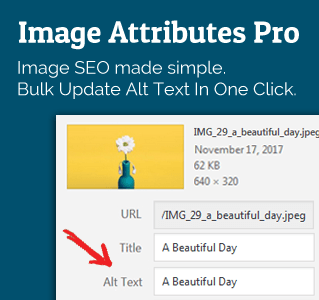A guest post by David. If you wish to write one, check out the guest-posting guidelines and details.
If you thought search optimizing your blog couldn’t get any more complicated, think again. It’s only a matter of time before the cloud company boom and increasingly sophisticated mobile device technology makes web-browsing on-the-go the dominant means by which people access the Internet. Indeed, studies predict that by the middle of the decade, web browsing through mobile devices will see a 400% increase.
For bloggers, this means the majority of future readers are going to be doing so through their smartphones. Those serious about maintaining readership ought to consider the following ways to make blogs mobile-friendly:
 Drop Flash, or Make a Mirror
Drop Flash, or Make a Mirror
Adobe Flash Animation isn’t something that most bloggers use anyway, since it tends to detract from the content not improve it. Those that do use Flash, however, risk kissing goodbye any iPhone-based traffic goodbye, since as of today the iPhone does not accept the Flash platform and it probably will never. iPhone users are ever growing and if you don’t want to loose potential readers, you should consider this. If Flash is essential, then you must create a mobile version of your blog instead that is absent the platform.
Reduce Image Size
Large high resolution images can make an otherwise visually uninteresting blog look professional and alluring. The problem is that even with 4G, the small 3.5-4 inch screens of most smartphones are not capable of handling the intensity of such images. Even if they were, the time it takes to load these images is enough to incite most would-be visitors to hit the back button. If big images are what makes your blog stand out through traditional desktop browsing, then use CSS to create a reduced version for mobile traffic.
Center Your Content
Mobile web browsers automatically hone in on the center of a website unless otherwise instructed by the site itself. It’s important to make sure that your written work can be easily found once the page is loaded. If your blog site is packed with several images, links, and icons, in addition to an unconventional content placement, then it’ll be harder for readers to actually navigate to your writing and they’ll instead reverse course and seek information elsewhere.
Perform Monthly Tests
It’s not easy to round up enough mobile devices to have the ability to instantly observe how your site looks through individual browsers, but by doing so you increase the likelihood of identifying a potentially SEO-killing problem before it gets worse. Not all mobile browsers are the same, and while through the Android browser your blog looks great, Safari might project it with just enough of a gradient change that it’s impossible to read the text against your chosen background. Examine your blog through as many different mobile browsers as possible as often as you can.
Making sure that mobile web users have easy access to your site should be a primary concern for most bloggers. It won’t be long before people primarily consult the blogosphere via smartphones and nothing else. Don’t put your advertising revenue at stake: make your blog mobile-friendly today.
The Author, David Avrick is an Android application developer and works for a mobile application developing company based in UK.






Leave a Reply